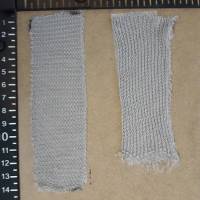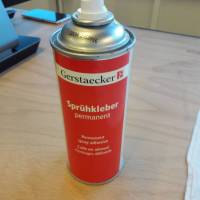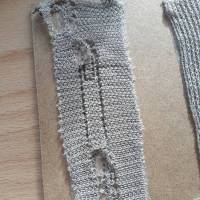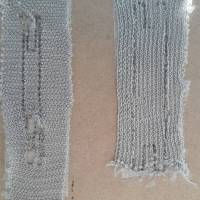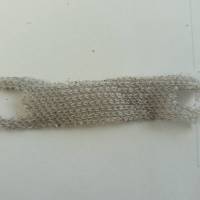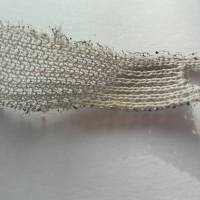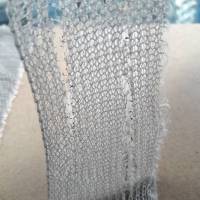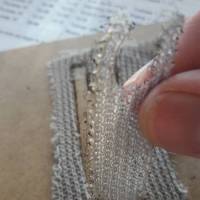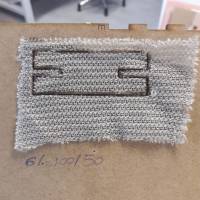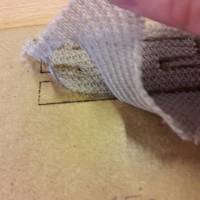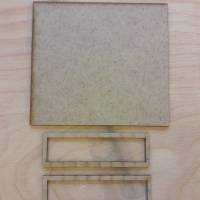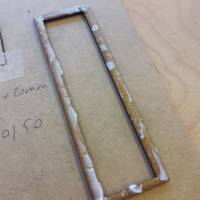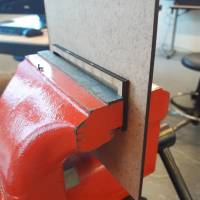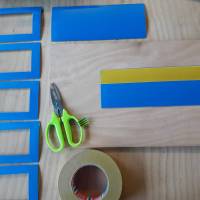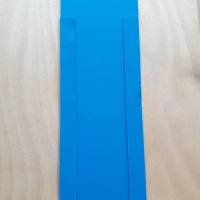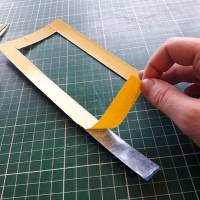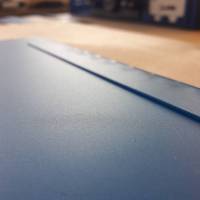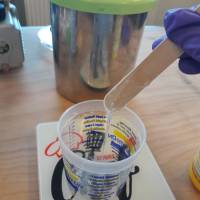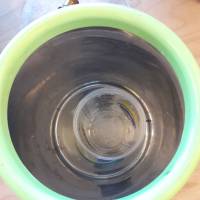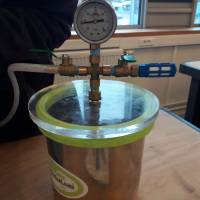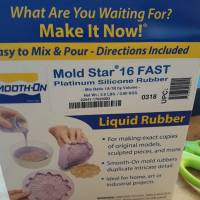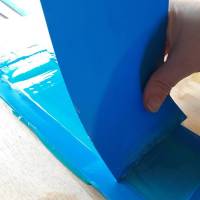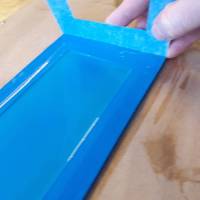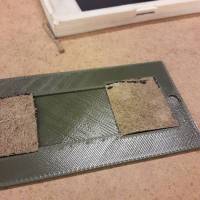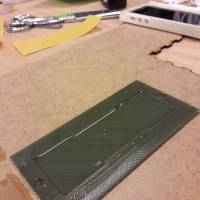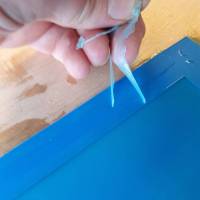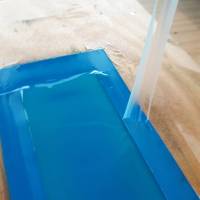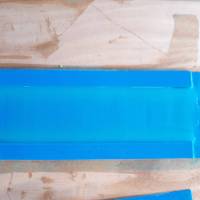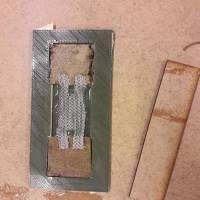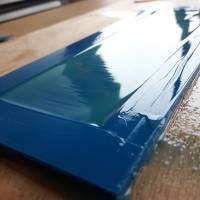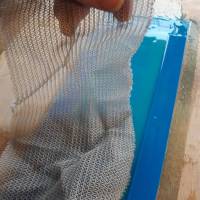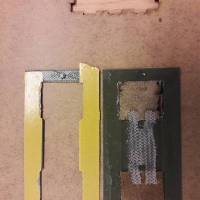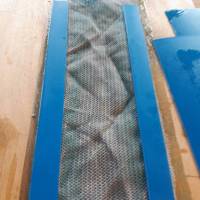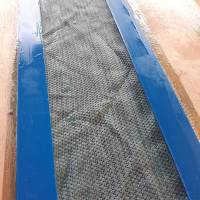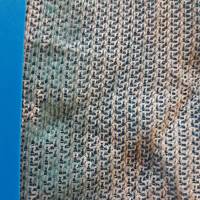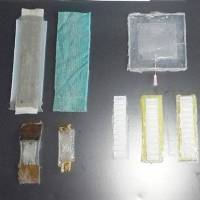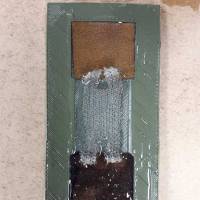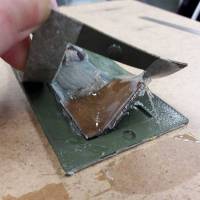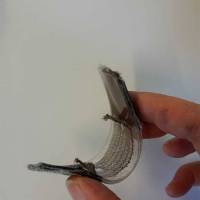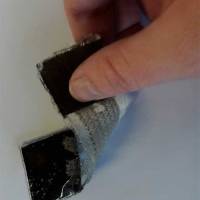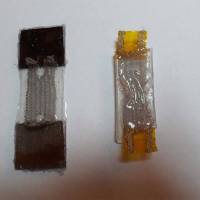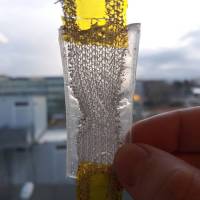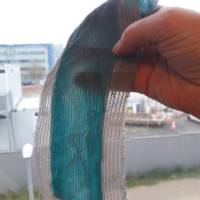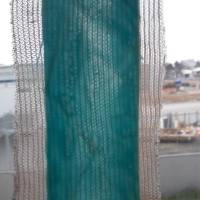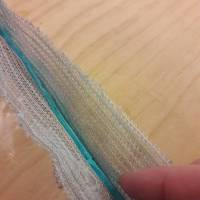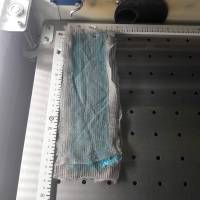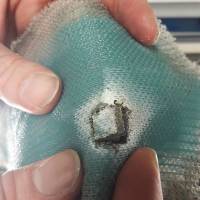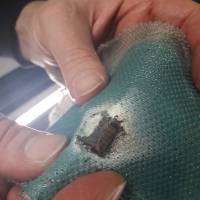This is an old revision of the document!
Class 9 : e-textiles-wearables2
Silicone Hybrid Fabric Sensor
Material
- Knit conductive fabric Adafruit
- Silicone Smooth-on SORTA-Clear™ 37
- Silicone Smooth-on Mold Star™ 16 FAST
- Silicone Smooth-on Ecoflex™ 00-30
Project Description
Create an interactive object; if you are already experienced with coding, focus on fully integrating a microcontoller into a textile circuit. If you are new to coding, choose an example and get it working using your own sensors and actuators. * Build your own soft actuators and sensors * Integrate them in a working project * Document what you did * Include all source files
Inspirations & References
Hybrid Sensor Fabrication
1/cut conductive fabric
With Epilog Engraver, you can choose to cut with CO2 or Fiber. The best result with metal is fiber. Settings after several tests : speed : 6 / Power : 100 / Frequence : 50 with Autofocus.
The conductive fabric is glued with adhesive spray on wood board, so it doesn't move during cutting.
After several tests, the fabric frays and is no longer strong enough
the fabric must be cut wide enough so that it remains strong with its extensions
2/cut wood applicator and 1mm plastic applicator
the first silicone applicator was 3mm to pour silicone onto the conductive fabric. The cutting first part is glued into the wood support and held with clamp.
The second applicator with acrylic is 1mm, the thinner thickness should be a more flexible sensor.
The cutting first part is fixed into the support with double-sided tape.
3/Silicone mix in vacuum machine
Silicone have to put into the vaccuum machine to remove the air. After mixing parts A and B, vacuum degassing is recommended to eliminate any entrapped air. Vacuum material for 2-3 minutes (29 inches of mercury), making sure that you leave enough room in container for product volume expansion.
4/pour silicone into the wood applicator and 1mm plastic applicator
to apply a uniform coat, scrape from top to bottom with equal pressure.
Several silicone tests have to be done for testing flexibility. The ecoflex in the acrylic applicator give a really thin film and a good flexibility thanks to its shore hardness of 00-30.
5/pour silicone into the first 3D printed PLA applicator by Romain Di Vozzo
7/let it dry for 4 hours
8/put the piece of fabric
9/pour a second silicone layer
10/hybrid sensor observations
Arduino tests
[http://www.instructables.com/id/Connecting-a-textile-analog-sensor-to-Arduino/|Connecting a Textile Analog Sensor to Arduino]]

